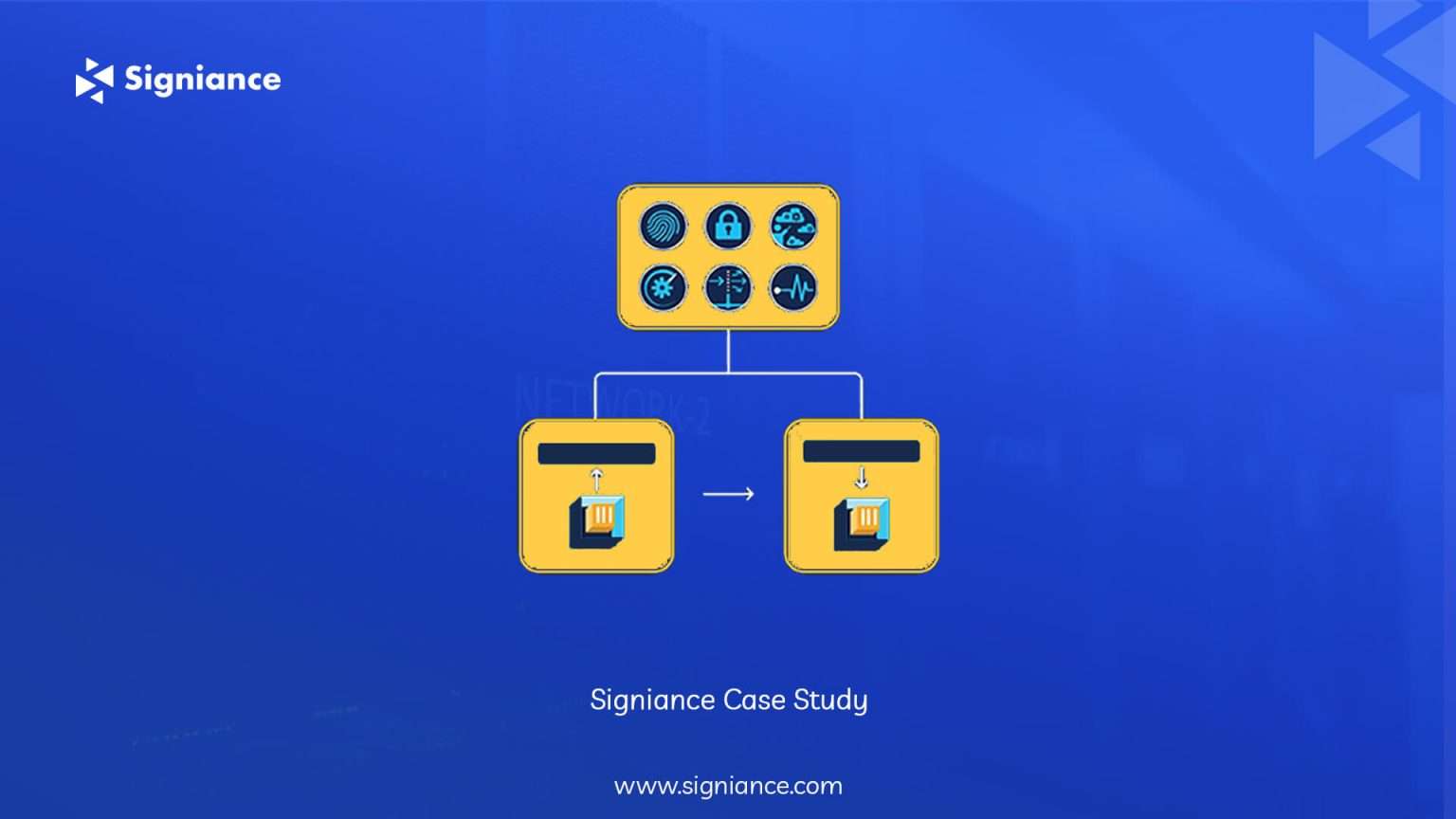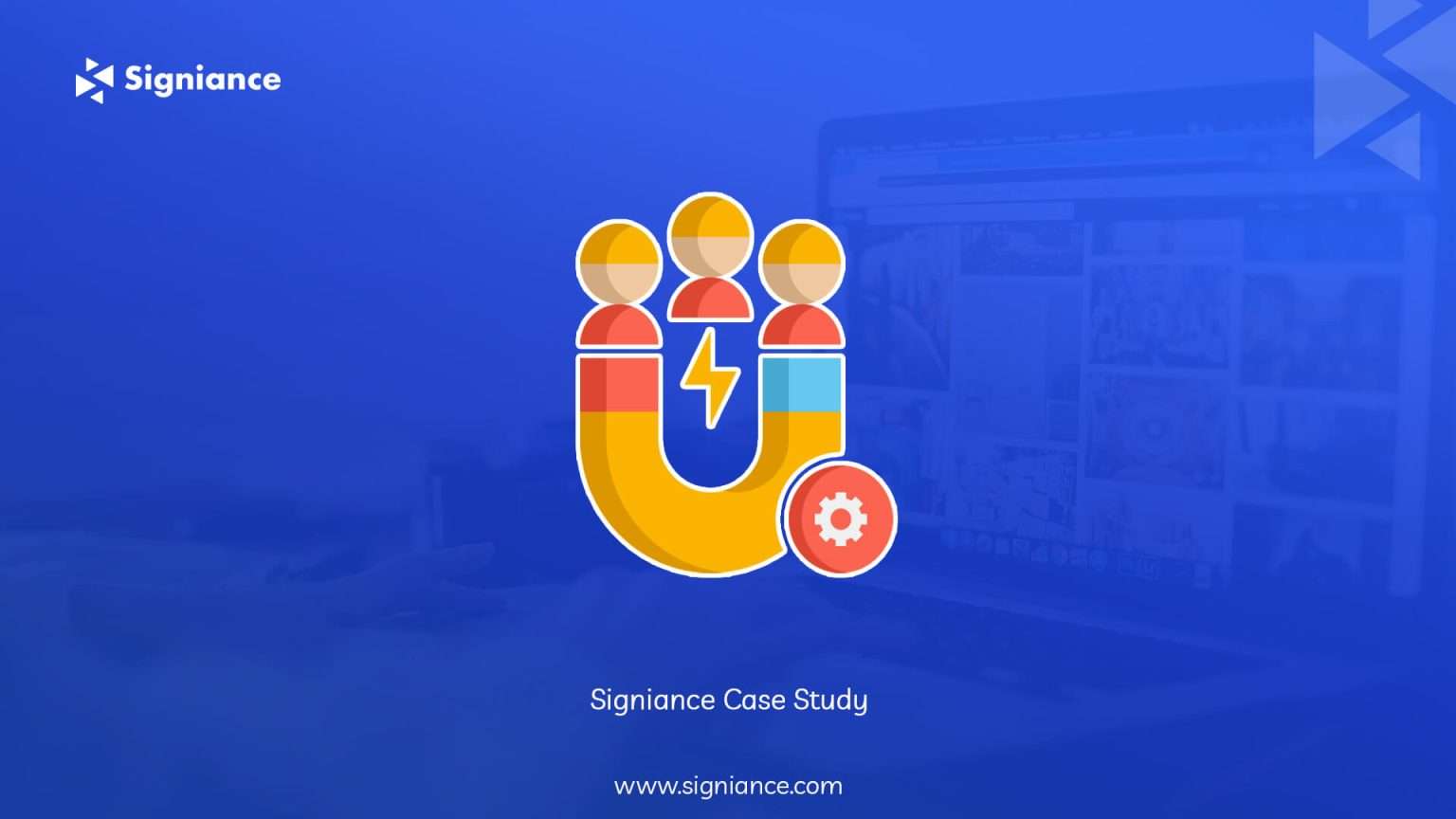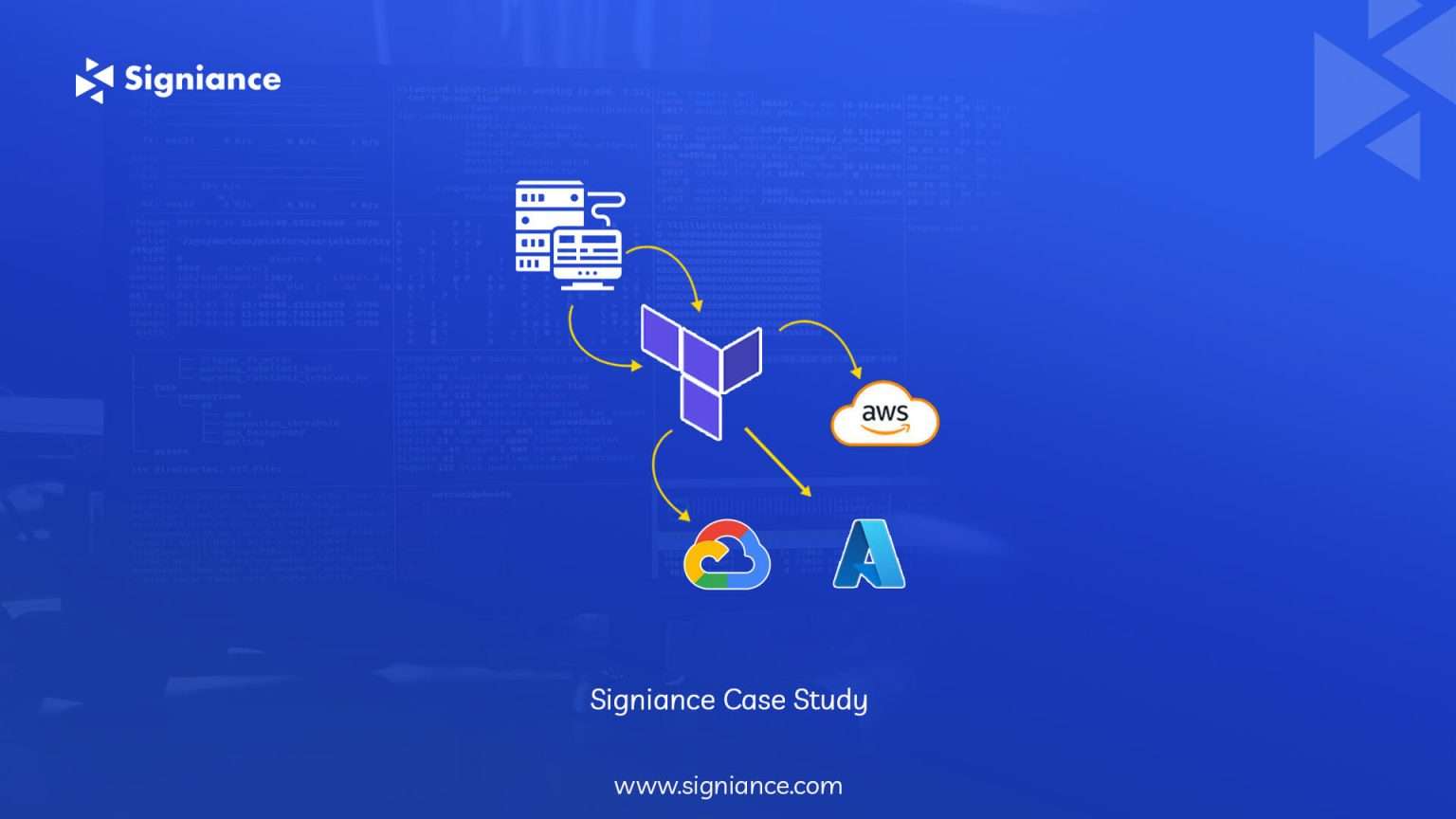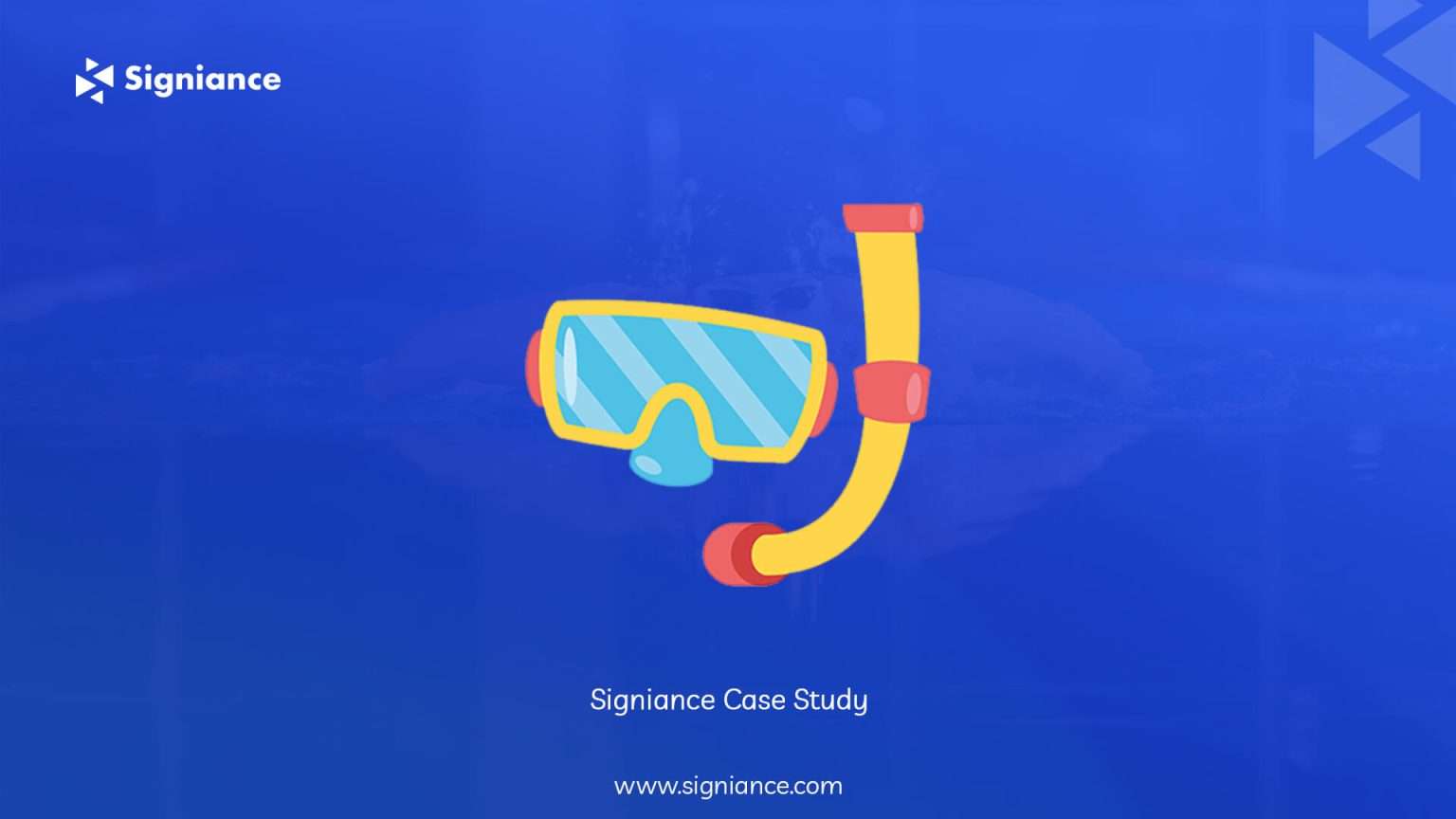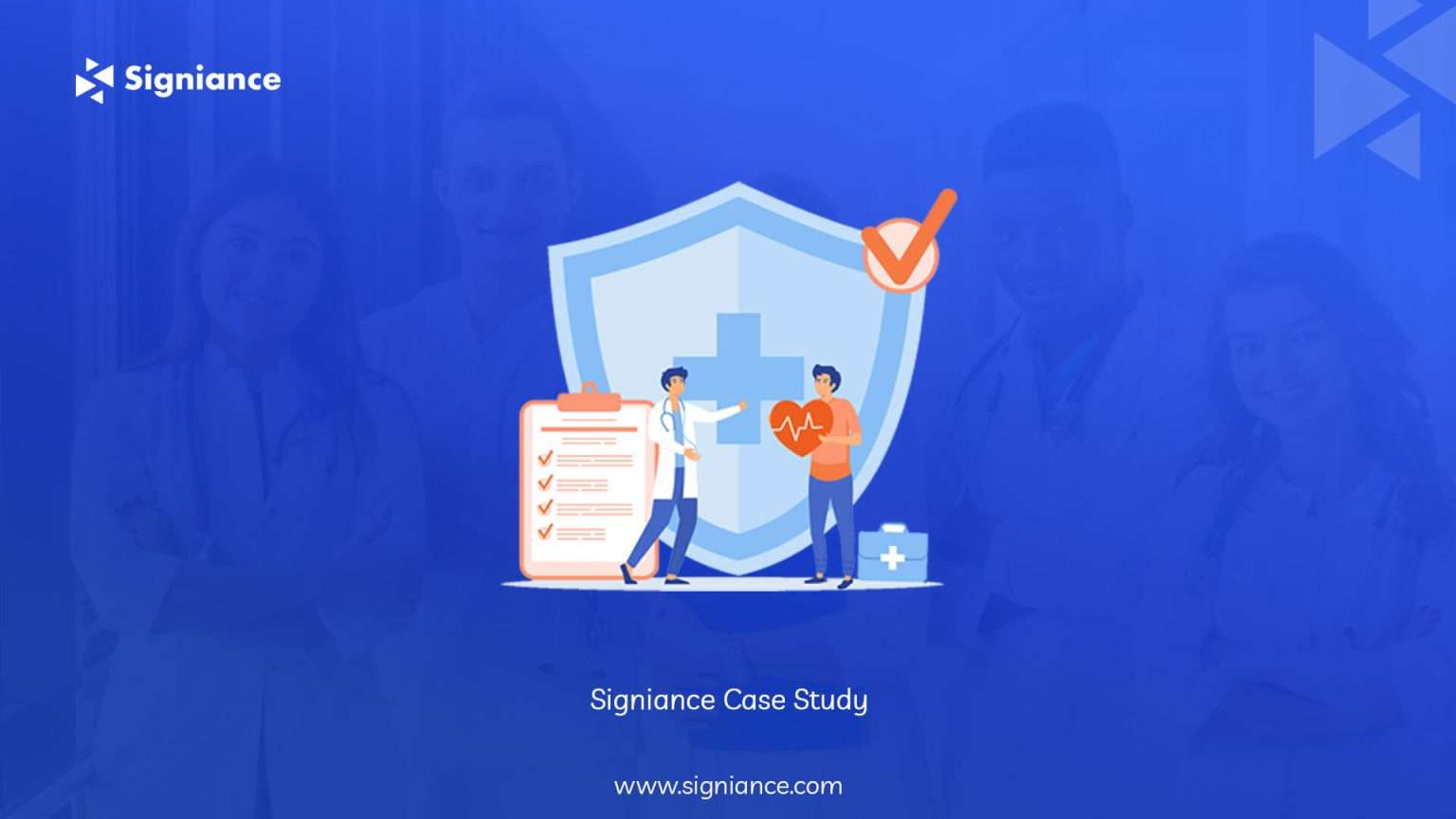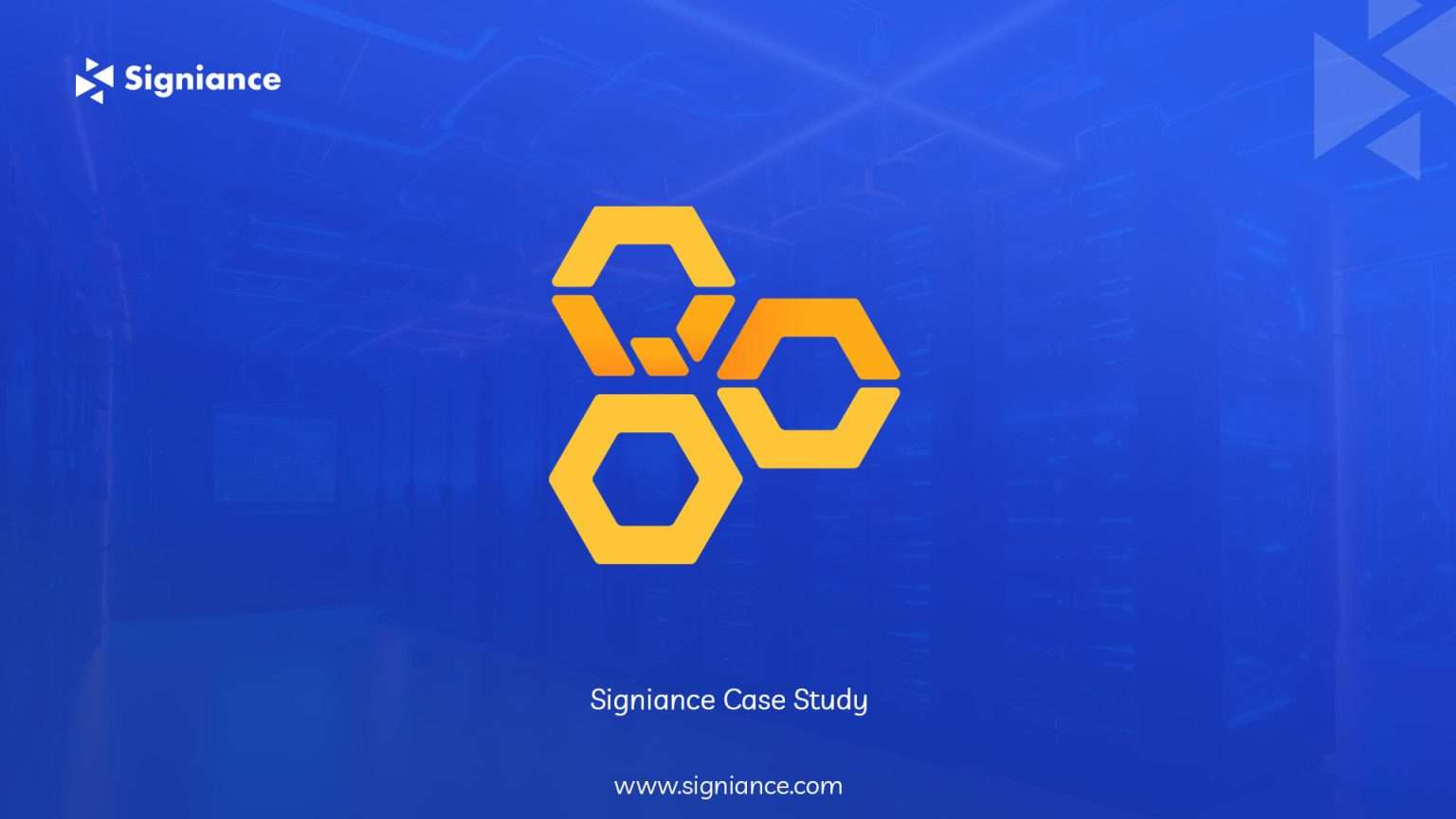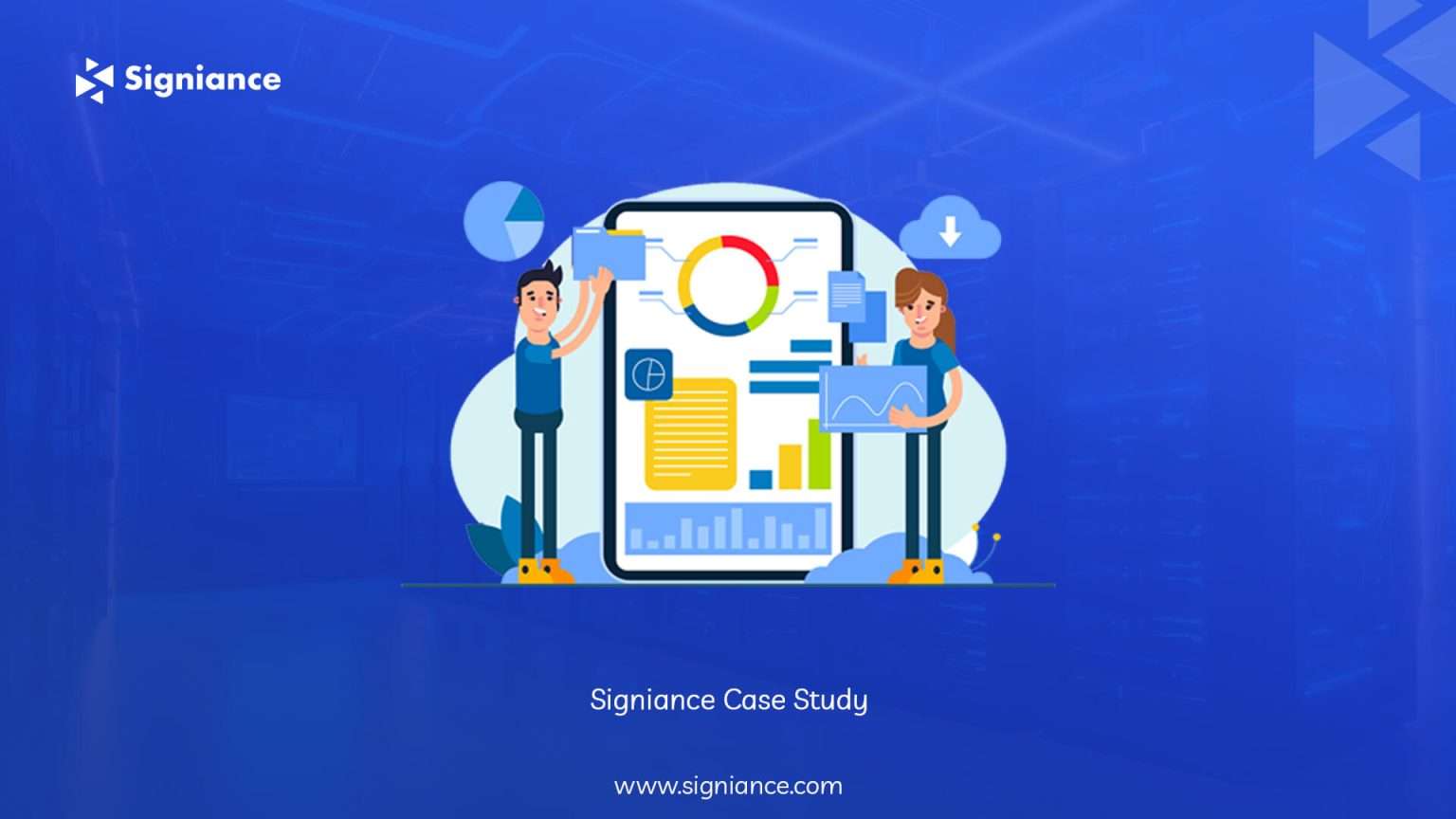
Our Case Study
From Problem to Profit

Empower your business with a Trusted AWS Consulting Partner.


Empower your business with a Trusted AWS Consulting Partner.



Enhancing Scalability and Efficiency in the Gaming Industry

Enhancing Scalability and Efficiency in the Gaming Industry

About the Client
The client specializes in developing engaging and interactive mobile and online games, catering to a global audience. Their popular titles, such as Ludo and Teenpatti, have garnered a significant user base, which continues to grow rapidly. As a young company, the client aims to deliver high-quality gaming experiences while managing operational costs effectively.
Project Goals
Our client, a dynamic startup in the gaming industry, faced the challenge of ensuring their servers could automatically scale to accommodate millions of users, far beyond their current capacity of 50,000 concurrent users. The objective was to design and implement a robust, efficient, and cost-effective infrastructure that could support massive user growth and provide a seamless gaming experience.
Challenges
1. Cost Savings for a Small Startup
As a startup with limited financial resources, the client needed a solution that minimized costs without compromising performance or scalability.
2. Robust and Efficient Infrastructure
The infrastructure had to be capable of handling a substantial increase in concurrent users, ensuring reliability and efficiency at all times.
3. Auto-Scaling
To maintain user satisfaction and operational efficiency, the infrastructure needed to scale server resources in response to fluctuating user demand automatically.
Solutions
To overcome the challenges and achieve the project goals, we implemented the
following solutions:
Auto-Scaling Groups
We configured AWS Auto-Scaling Groups to automatically adjust the number of servers based on real-time user demand. This ensured that the infrastructure could seamlessly handle increases in user load without manual intervention.
Elastic Load Balancing
We implemented AWS Elastic Load Balancing (ELB) to distribute incoming traffic evenly across multiple servers. This prevented any single server from becoming overloaded and ensured a smooth, reliable gaming experience for users.
Cost Management Tools
We integrated AWS Cost Explorer and AWS Trusted Advisor to provide ongoing cost monitoring and optimization. These tools helped the client manage their cloud expenses effectively, identifying opportunities for cost savings without sacrificing performance.
Tech Stack
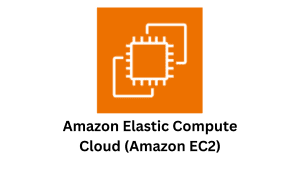
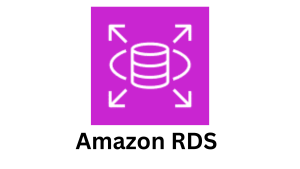

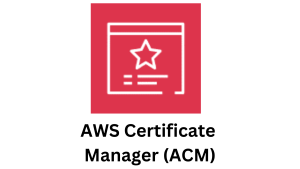
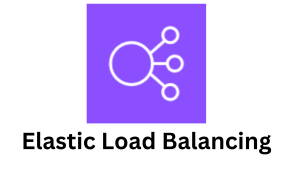
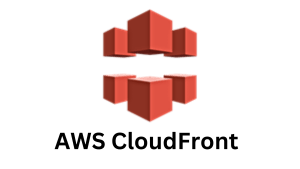
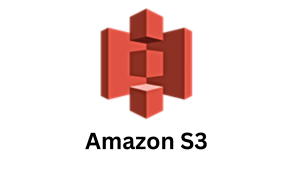
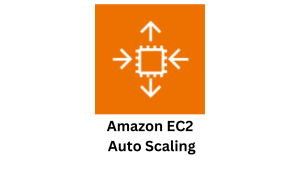
Key Benefits Delivered

Reliability
High availability and reliability of game servers ensured continuous, uninterrupted gameplay, enhancing user trust and loyalty.
Reliability
High availability and reliability of game servers ensured continuous, uninterrupted gameplay, enhancing user trust and loyalty.

Improved Performance
Users experienced faster load times and more reliable gameplay, leading to higher satisfaction and engagement.
Improved Performance
Users experienced faster load times and more reliable gameplay, leading to higher satisfaction and engagement.

Scalability
The infrastructure scaled effortlessly to meet user demand, providing a seamless experience even during peak times.
Scalability
The infrastructure scaled effortlessly to meet user demand, providing a seamless experience even during peak times.

Cost Efficiency
The client benefited from substantial cost savings, critical for sustaining growth as a startup.
Cost Efficiency
The client benefited from substantial cost savings, critical for sustaining growth as a startup.
Driving Growth through Strategic Innovation
Send download link to:
Building Highly Available, Scalable, and Secure Microservices Infra with AWS ECS

Building Highly Available, Scalable, and Secure Microservices Infra with AWS ECS

About the Client
Centrae, a dynamic technology company, sought to optimise its microservices infrastructure for enhanced availability, scalability, and security. Their goal was to ensure seamless operation across multiple environments while bolstering defences against cyber threats.
Project Goals
Centrae is confronted with a significant business obstacle as they prepare to launch their product. The primary focus revolves around guaranteeing a seamless and prosperous go-live, all the while establishing a resilient and safeguarded infrastructure. The current non-production setup must align with industry-leading standards, presenting potential threats and obstacles to the overall performance and security of the product.
Challenges
Centrae faced the challenge of building an infrastructure to support microservices running on containers that would be highly available, scalable, and secure. Additionally, they needed to establish a robust monitoring process for resource management and automate the building and deployment of their services.
Solutions
To overcome the challenges and achieve the project goals, we implemented the
following solutions:
ECS Services Implementation
Leveraging Amazon ECS, Centrae deployed microservices across various environments, including development, testing, and production. ECS ensured scalability and flexibility in managing containerized applications.
Multi-AZ RDS Setup
Centrae set up RDS databases in multi-AZ configuration to achieve high availability. This ensured redundancy and minimized downtime in case of failures.
WAF Integration
Centrae implemented a Web Application Firewall (WAF) to filter bot requests and enhance security against web-based attacks.
AWS Security Hub
Utilizing AWS Security Hub with CIS policies, Centrae managed server security according to industry best practices.
Security Improvement
By implementing WAF, Security Hub, and adhering to CIS policies, Centrae significantly improved security, achieving a 78% increase, and enhancing the protection of their client’s application.
Tech Stack

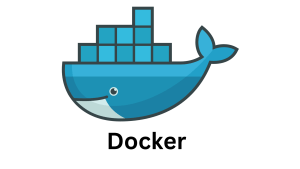

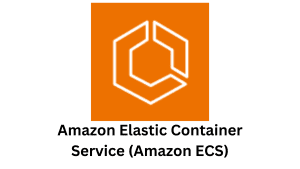
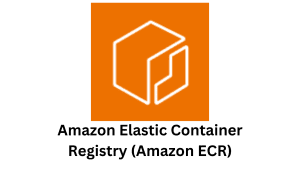






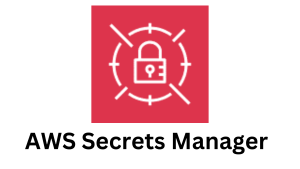

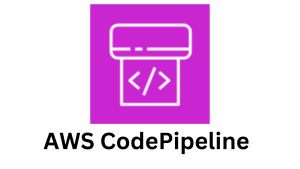
Key Benefits Delivered

Enhanced Security
Implementation of WAF and adherence to CIS policies led to a significant increase in security, improving protection against web-based attacks.
Enhanced Security
Implementation of WAF and adherence to CIS policies led to a significant increase in security, improving protection against web-based attacks.

Improved Availability
Setting up RDS in Multi-AZ configuration ensured high availability of databases, minimising downtime and ensuring continuous operation.
Improved Availability
Setting up RDS in Multi-AZ configuration ensured high availability of databases, minimising downtime and ensuring continuous operation.

Scalability
Deployment of microservices on ECS provided scalability to meet increasing demands, allowing for efficient resource allocation and management.
Scalability
Deployment of microservices on ECS provided scalability to meet increasing demands, allowing for efficient resource allocation and management.

Streamlined Deployment
Automation of building and deploying processes facilitated efficient deployment of microservices, reducing manual effort and accelerating time-to-market.
Streamlined Deployment
Automation of building and deploying processes facilitated efficient deployment of microservices, reducing manual effort and accelerating time-to-market.

Effective Monitoring
The establishment of a monitoring process enabled proactive detection of issues and optimization of resource usage, ensuring optimal performance and availability.
Effective Monitoring
The establishment of a monitoring process enabled proactive detection of issues and optimization of resource usage, ensuring optimal performance and availability.
Driving Growth through Strategic Innovation
Send download link to:
Enhancing Performance and Cost Optimization for Lead Generation Website

Enhancing Performance and Cost Optimization for Lead Generation Website

About the Client
Our client operates a lead generation website marketing for fitness and martial art gyms, leveraging Artificial Intelligence to drive targeted leads.
Project Goals
The primary goal of the project was to create a cost-effective and highly available platform for a scraper application, with a focus on reducing fetching time and improving overall speed and performance.
Challenges
The key challenge faced in this project was to optimize the scraping process, specifically by reducing fetching time and load time to enhance speed and efficiency.
Solutions
Our team of certified experts conducted a comprehensive study and devised effective solutions to address the challenges of the project. The following implementations were carried out:
Microservice-based Architecture
Application Development: The scraper application was built using Python, ensuring flexibility and ease of development.
Containerization: We utilized ECS (Elastic Container Service) to host the microservices, enabling scalability, portability, and efficient resource utilization.
Image Storage: ECR (Elastic Container Registry) was utilized to store the built Docker images securely.
Database and Environment Management
Database Hosting: An RDS (Relational Database Service) instance was employed to host the database, ensuring reliability and efficient data management.
Secure Environment Variables: Secret Manager was utilized to securely store and manage environment variables related to the database, ensuring data protection.
Continuous Integration and Deployment (CI/CD)
Code Pipeline: We implemented a CI/CD pipeline using AWS CodePipeline, automating the build, test, and deployment processes.
CodeBuild: CodeBuild was used for building the application, ensuring consistent and reliable code compilation.
CodeCommit: CodeCommit served as the source code repository, providing version control and facilitating collaboration among development teams.
Performance Optimization and Cost Efficiency
Resource Scaling: Utilizing EC2 instances, we implemented automatic scaling to dynamically adjust resources based on demand, ensuring optimal performance and cost efficiency.
Load Balancing: ALB (Application Load Balancer) was utilized to distribute incoming traffic evenly among the microservices, improving response times and availability.
Content Delivery and Caching: CloudFront was implemented as a content delivery network (CDN) to reduce latency and improve the overall user experience by caching frequently accessed content.
Tech Stack














Key Benefits Delivered

Improved Performance
The microservice-based architecture, optimized database management, and performance tuning techniques led to faster fetching and reduced load times, enhancing the overall speed of the scraper application.
Improved Performance
The microservice-based architecture, optimized database management, and performance tuning techniques led to faster fetching and reduced load times, enhancing the overall speed of the scraper application.

Scalability and Cost Optimization
Leveraging the scalability features of AWS services, the solution enabled efficient resource utilization, reducing costs and accommodating future growth.
Scalability and Cost Optimization
Leveraging the scalability features of AWS services, the solution enabled efficient resource utilization, reducing costs and accommodating future growth.

Enhanced Developer Productivity
The CI/CD pipeline and version control facilitated seamless collaboration among development teams, accelerating the development and deployment processes.
Enhanced Developer Productivity
The CI/CD pipeline and version control facilitated seamless collaboration among development teams, accelerating the development and deployment processes.

User-Friendly Experience
Leveraging caching and content delivery mechanisms, the solution improved user experience by reducing latency and providing faster response times.
User-Friendly Experience
Leveraging caching and content delivery mechanisms, the solution improved user experience by reducing latency and providing faster response times.
Driving Growth through Strategic Innovation
Send download link to:
Cross-Cloud Resource Provisioning with Terraform

Cross-Cloud Resource Provisioning with Terraform

About the Client
A multinational conglomerate headquartered in India, embraces technology to drive innovation, efficiency, and growth across its diverse business interests. They leverage technology to enhance customer experiences, optimize processes, and stay ahead in a rapidly evolving business landscape.
Project Goals
The Efficient Resource Provisioning solution enables clients to swiftly allocate resources across various Azure and AWS accounts, streamlining the process and saving valuable time. Utilizing Terraform and a JSON file, it ensures consistency and standardization across all provisioned resources, reducing the risk of errors. Moreover, by automating the provisioning process and specifying resource configurations through the JSON file, it enhances cost management, optimizing resource sizes and configurations to minimize unnecessary expenses. Additionally, leveraging Terraform’s capabilities, it offers scalability and flexibility, allowing for swift adjustments to resource allocation according to evolving business needs and workload demands across Azure and AWS accounts.
Challenges
1. Cloud Provider Differences
Addressing differences in resource types, naming conventions, and configuration options between Azure and AWS to align the provisioning process across both cloud providers.
2. Account and Access Management
Managing resources across multiple Azure and AWS accounts, including access management, credentials, and security configurations.
3. Maintenance and Updates
Keeping the Terraform codebase up to date, ensuring compatibility with new features and APIs as the cloud environment evolves.
Solutions
To overcome the challenges and achieve the project goals, we implemented the
following solutions:
Infrastructure as Code
Utilizing Terraform as an infrastructure as a code tool provided a consistent and reliable approach to defining and provision cloud resources. It facilitated version control, automation, and easy replication of infrastructure configurations.
JSON File as Input
Leveraging a JSON file as input to the Terraform code simplified the provisioning process, allowing flexible and customizable variables and configurations for the resources being provisioned.
Cross-Cloud Provider Support
Terraform’s support for multiple cloud providers, including Azure and AWS, enables the management of resources across different cloud environments using a single tool and codebase.
Tech Stack














Key Benefits Delivered

Streamlined Provisioning
The use of Terraform enabled efficient resource provisioning across Azure and AWS accounts, reducing manual effort and saving time.
Streamlined Provisioning
The use of Terraform enabled efficient resource provisioning across Azure and AWS accounts, reducing manual effort and saving time.

Consistency and Standardization
By enforcing consistent configurations through Terraform and a JSON file, the project achieved standardized resource setups, minimizing the risk of misconfigurations.
Consistency and Standardization
By enforcing consistent configurations through Terraform and a JSON file, the project achieved standardized resource setups, minimizing the risk of misconfigurations.

Enhanced Cost Management
Automation and configuration specifications facilitated by Terraform helped optimize resource sizes and configurations, leading to improved cost management.
Enhanced Cost Management
Automation and configuration specifications facilitated by Terraform helped optimize resource sizes and configurations, leading to improved cost management.

Scalability and Flexibility
Leveraging Terraform, the client gained the ability to easily scale resources up or down, meeting changing business needs and accommodating workload demands.
Scalability and Flexibility
Leveraging Terraform, the client gained the ability to easily scale resources up or down, meeting changing business needs and accommodating workload demands.

Simplified Management
With a unified tool and codebase, managing resources across Azure and AWS became more streamlined, reducing complexity and enhancing overall efficiency.
Simplified Management
With a unified tool and codebase, managing resources across Azure and AWS became more streamlined, reducing complexity and enhancing overall efficiency.
Ensuring Smooth Product Launch and Secure Infrastructure with AWS Solutions

Ensuring Smooth Product Launch and Secure Infrastructure with AWS Solutions

About the Client
Our client has an online platform that allows you to archive your data—one safe site where all of your family’s cherished memories and memorabilia will be organized.
Project Goals
Archoral is confronted with a significant business obstacle as it prepares to launch its product. The primary focus revolves around guaranteeing a seamless and prosperous go-live, all the while establishing a resilient and safeguarded infrastructure. The current non-production setup must align with industry-leading standards, presenting potential threats and obstacles to the overall performance and security of the product
Challenges
1. Product Go-Live Readiness
The imminent product launch requires a robust and reliable infrastructure to handle anticipated user traffic and ensure a seamless user experience.
The current infrastructure may not be adequately prepared for the production environment, raising concerns about potential performance bottlenecks and downtime during peak usage.
2. Highly Available and Secure Infrastructure
Archoral recognizes the importance of high availability and security in maintaining customer trust and satisfaction.
The existing infrastructure may need more redundancies and security measures to guarantee uninterrupted service and protect sensitive data.
3. Non-Production Setup Misalignment
The non-production environment needs to align with industry best practices, posing challenges in replicating realistic scenarios for testing and development.
Inconsistencies between non-production and production environments may lead to unexpected issues during the go-live phase, affecting the product’s overall stability.
Solutions
To overcome the challenges and achieve the project goals, we implemented the
following solutions:
Ensure Successful Go-Live
Implement a resilient infrastructure capable of handling the expected load during the product launch, minimizing the risk of downtime and ensuring a positive user experience.
Establish High Availability and Security
Design and implement a highly available and secure infrastructure that adheres to industry best practices, safeguarding the product’s integrity, availability, and user data.
Align Non-Production Setup with Best Practices
Bring the non-production environment in line with industry best practices to facilitate consistent testing, development, and deployment processes, reducing the likelihood of discrepancies between environments.
Tech Stack









Key Benefits Delivered

Deployment Frequency
Achieved an 80% increase in deployment frequency, moving from bi-weekly to weekly releases, enhancing agility and responsiveness to the development process.
Deployment Frequency
Achieved an 80% increase in deployment frequency, moving from bi-weekly to weekly releases, enhancing agility and responsiveness to the development process.

Lead Time for Changes
Reduced lead time for changes by 95% streamlining the development pipeline and accelerating time-to-market.
Lead Time for Changes
Reduced lead time for changes by 95% streamlining the development pipeline and accelerating time-to-market.

Infrastructure Cost Optimization
Realized a 40% cost reduction through effective resource optimization and scaling strategies in the AWS environment.
Infrastructure Cost Optimization
Realized a 40% cost reduction through effective resource optimization and scaling strategies in the AWS environment.

Security Posture Improvement
Enhanced security posture by achieving a 67% reduction in identified vulnerabilities through continuous monitoring and automated security measures.
Security Posture Improvement
Enhanced security posture by achieving a 67% reduction in identified vulnerabilities through continuous monitoring and automated security measures.

Resource Utilization Efficiency
Optimized resource utilization, achieving a 35% reduction in idle resources and associated costs.
Resource Utilization Efficiency
Optimized resource utilization, achieving a 35% reduction in idle resources and associated costs.
Driving Growth through Strategic Innovation
Send download link to:
Revolutionizing English Language Assessment and Instruction

Revolutionizing English Language Assessment and Instruction

About the Client
Our client is a globally recognized leader in English language assessment and instruction. They collaborate with prestigious universities, Fortune 500 companies, businesses of all sizes, educational institutions, and individual learners worldwide.
Project Goals
The client has successfully applied their proven teaching methodologies to assess English language proficiency. They have empowered non-English speakers from diverse backgrounds to achieve significant language skills within just four months, enabling them to secure employment and participate in programs requiring English proficiency. To support their expanding operations, the client sought a reliable, long-term partner to efficiently manage their day-to-day infrastructure operations, establish an optimal architecture, enhance performance, implement robust monitoring, and ensure a secure environment. Additionally, they desired a streamlined automation process for rapid feature deployment on their applications.
Challenges
1. Scalability and Availability
The client’s monolithic application on a single server proved inadequate as their business grew, resulting in an inability to handle increasing user requests.
2. Performance Monitoring
The client needed efficient mechanisms to monitor the performance of their infrastructure and applications.
3. Cost Optimization
Keeping costs low while ensuring optimal infrastructure performance was a challenge for the client.
4. Security
The client required a robust security framework to safeguard their environment and protect sensitive data.
Solutions
To overcome the challenges and achieve the project goals, we implemented the
following solutions:
Transition to Service-based Architecture
To address scalability challenges, the client migrated from a monolithic architecture to a service-based architecture, enabling greater flexibility and scalability.
Containerization
By containerizing the application, the client achieved better resource utilization, deployment efficiency, and enhanced scalability.
AWS ECS Hosting
Hosting the services on AWS Elastic Container Service (ECS) provided the client with a scalable and highly available infrastructure that could be easily deployed with a single click.
Infrastructure Automation
Jenkins pipelines and CloudFormation Templates were implemented to automate infrastructure creation, ensuring faster releases of new features on applications.
Performance Monitoring
Robust monitoring mechanisms were set up to track resource utilization, identify bottlenecks, and optimize performance.
Cost Optimization
Best practices were implemented to optimize costs, such as right-sizing instances, leveraging AWS services efficiently, and continuously monitoring resource usage.
Security Framework
The client implemented security measures following the Center for Internet Security (CIS) framework, ensuring the highest level of security for their environment.
Continuous Improvement
Ongoing efforts were dedicated to identifying improvement areas and implementing enhancements to optimize the overall environment.
Tech Stack














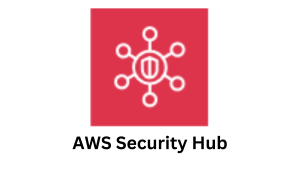
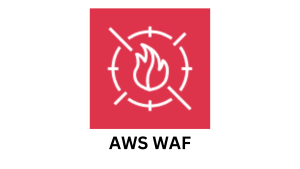

Key Benefits Delivered

Scalability and Availability
The transition to a service-based architecture and ECS hosting enabled greater scalability and ensured high availability to handle increased user requests effectively.
Scalability and Availability
The transition to a service-based architecture and ECS hosting enabled greater scalability and ensured high availability to handle increased user requests effectively.

Performance Optimization
Robust monitoring mechanisms improved infrastructure performance by identifying and resolving bottlenecks promptly, enhancing the user experience.
Performance Optimization
Robust monitoring mechanisms improved infrastructure performance by identifying and resolving bottlenecks promptly, enhancing the user experience.

Cost Efficiency
Implementing cost optimization strategies reduced infrastructure costs by leveraging best practices, right-sizing instances, and efficient resource utilization.
Cost Efficiency
Implementing cost optimization strategies reduced infrastructure costs by leveraging best practices, right-sizing instances, and efficient resource utilization.

Enhanced Security
The implementation of a security framework following industry standards ensured the highest level of security for the client’s environment and protected sensitive data.
Enhanced Security
The implementation of a security framework following industry standards ensured the highest level of security for the client’s environment and protected sensitive data.

Automation and Rapid Feature Deployment
Infrastructure automation using Jenkins pipelines and CloudFormation Templates streamlined the deployment process, enabling faster feature releases and improving time to market.
Automation and Rapid Feature Deployment
Infrastructure automation using Jenkins pipelines and CloudFormation Templates streamlined the deployment process, enabling faster feature releases and improving time to market.
Driving Growth through Strategic Innovation
Send download link to:
Establishing a Highly Available and Scalable Infrastructure for a Global Sports Company

Establishing a Highly Available and Scalable Infrastructure for a Global Sports Company

About the Client
Magic5, a sports company founded by swimming enthusiasts Bo and Rasmus from Denmark, specializes in designing professional swimming goggles that prevent water leakage and offer a comfortable fit.
Project Goals
As a cloud service provider, our objective was to help Magic5 establish a robust online presence worldwide, enabling customers to purchase their custom-made swimming goggles based on their individual needs.
Challenges
1. Slow processing of facial recognition
Enhance the performance of facial recognition algorithms to ensure faster and more accurate processing, improving the overall customer experience.
2. Improved product delivery
Optimize the infrastructure performance to facilitate faster delivery of custom-made swimming goggles, reducing order processing time.
3. Environment security
Implement robust security measures to protect the client’s environment and customer data, ensuring trust and confidentiality.
4. Cost and performance optimization
Identify opportunities to optimize costs while maintaining high performance, maximizing resource efficiency.
5. Continuous resource monitoring
Establish proactive monitoring mechanisms to detect and address potential issues promptly, minimizing downtime and disruptions.
Solutions
To overcome the challenges and achieve the project goals, we implemented the
following solutions:
Highly Available and Scalable Infrastructure
Utilize AWS Beanstalk to design and deploy a resilient infrastructure that can handle high traffic demands and automatically scale based on workload fluctuations, ensuring seamless availability for customers.
Multiple Environments
Create separate environments (Development, Testing, and Production) to streamline collaboration among teams, facilitating efficient development, testing, and deployment processes.
Monitoring and Alerting
Implement comprehensive resource monitoring using AWS CloudWatch, providing real-time visibility into the infrastructure’s performance and enabling proactive issue detection and resolution.
Tech Stack






Key Benefits Delivered

Robust Security
Implementing stringent security measures safeguards the client’s environment and customer data from unauthorized access, preserving trust and confidentiality.
Robust Security
Implementing stringent security measures safeguards the client’s environment and customer data from unauthorized access, preserving trust and confidentiality.

Cost Optimization
Continuous monitoring and analysis helped identify opportunities for cost optimization without compromising performance, delivering an efficient and cost-effective infrastructure solution.
Cost Optimization
Continuous monitoring and analysis helped identify opportunities for cost optimization without compromising performance, delivering an efficient and cost-effective infrastructure solution.

Improved Performance
Enhancing facial recognition algorithms and optimizing infrastructure performance resulted in faster order processing, improving customer satisfaction and overall experience.
Improved Performance
Enhancing facial recognition algorithms and optimizing infrastructure performance resulted in faster order processing, improving customer satisfaction and overall experience.

Enhanced Scalability
The scalable infrastructure enabled Magic5 to handle increased user traffic during peak periods, ensuring smooth and uninterrupted access for customers worldwide.
Enhanced Scalability
The scalable infrastructure enabled Magic5 to handle increased user traffic during peak periods, ensuring smooth and uninterrupted access for customers worldwide.
Driving Growth through Strategic Innovation
Send download link to:
Scaling Metaverse Pixel Streaming

Scaling Metaverse Pixel Streaming

About the Client
Our client is an innovative company specializing in creating high-impact Digital Experiences for global industry leaders and major brands in the Lifesciences, Healthcare, and Engineering domains.
Project Goals
The primary objective of the project was to establish a scalable pixel streaming setup that dynamically scales containers or servers based on the number of users. Each user should have a separate experience, and the experience should be automatically terminated when the user leaves.
Challenges
1. Cost-effective solution with minimal boot time:
Develop a solution that
optimizes costs while ensuring fast boot times for users, enabling efficient
resource utilization.
2. Resolving the single-user server issue:
Overcome the limitation of a
single server per user and implement a scalable approach to
accommodate multiple users simultaneously.
3. Limited documentation and research time:
Address the challenge of
working with new technology by conducting thorough research within the
given timeframe to gather insights and best practices.
Solutions
To overcome the challenges and achieve the project goals, we implemented the
following solutions:
Containerized User Experience
Instead of allocating a dedicated server
for each user, we adopted a containerized approach where each user had
their own container, enabling efficient utilization of server resources and
cost optimization.
ContainerizationDynamic Configuration with Docker Compose
Leveraging Docker
Compose, we implemented dynamic configuration for containers, allowing
flexible management and efficient scaling based on user demand.
Scalable Container Deployment with ECS and ECR
We deployed
containers on Amazon Elastic Container Service (ECS) using task definition
files, and leveraged Amazon Elastic Container Registry (ECR) for secure
storage of container images. This ensured scalable and reliable
infrastructure management.
Dynamic Port Assignment with Lambda and API Gateway
Employing
Lambda functions and API Gateway, we dynamically assigned ports to
containers, enabling each user to have a unique experience while
efficiently managing resources.
Efficient Traffic Management with Matchmaker Script
We developed a
Node. js-based matchmaker script to handle traffic management. The
script identified available containers and redirected users to them, or
provided a waiting page until a server became available. This optimized
resource utilization and improved the user experience.
Global Accessibility with CloudFront
Leveraging Amazon CloudFront, a
content delivery network (CDN), we ensured global accessibility of the pixel
streaming experience with low latency, providing a seamless user
experience across regions.
Tech Stack






Key Benefits Delivered

Cost Optimization
The container-based approach and dynamic scaling
optimized costs, ensuring efficient resource utilization and minimizing
expenses.
Cost Optimization
The container-based approach and dynamic scaling
optimized costs, ensuring efficient resource utilization and minimizing
expenses.

Enhanced Scalability
The solution is seamlessly scaled to accommodate
multiple users simultaneously, providing a smooth user experience even
during peak demand.
Enhanced Scalability
The solution is seamlessly scaled to accommodate
multiple users simultaneously, providing a smooth user experience even
during peak demand.

Efficient Resource Utilization
Multiple user experiences running on a
single server/container improved resource utilization, resulting in cost
savings and improved performance.
Efficient Resource Utilization
Multiple user experiences running on a
single server/container improved resource utilization, resulting in cost
savings and improved performance.

Global Accessibility
Leveraging Amazon CloudFront, the solution enabled
global accessibility with minimal latency, enhancing user experience
worldwide.
Global Accessibility
Leveraging Amazon CloudFront, the solution enabled
global accessibility with minimal latency, enhancing user experience
worldwide.

Streamlined Deployment
By utilizing Docker Compose, ECS, and ECR, the
deployment and management of containers were simplified, reducing
complexity and ensuring efficient operations.
Streamlined Deployment
By utilizing Docker Compose, ECS, and ECR, the
deployment and management of containers were simplified, reducing
complexity and ensuring efficient operations.
- client: Kers
- Location: Usa
- Surface Area: Skermset
- Architect: Istiak
- Year Of Complited: 2018
- Project Value: 50k
Optimizing eCommerce: CI/CD & Infrastructure Integration

Optimizing eCommerce: CI/CD & Infrastructure Integration

About the Client
Our client is a global eCommerce company with a vision to provide a secure, smart, and user-friendly platform for businesses to expand their operations across 255 countries and territories.
Project Goals
The primary goal of the project was to prepare comprehensive documentation for the existing CI/CD pipelines and assist the client in understanding the setup and integration processes for their infrastructure.
Challenges
1. Lack of Prior Knowledge:
The client had limited knowledge of the setup
and integration processes required for their infrastructure, leading to
difficulties in managing and modifying their CI/CD pipelines effectively.
2. Complex CI/CD Pipelines:
The existing CI/CD pipelines were complex,
making it challenging for the client to understand and modify them as per
their evolving requirements.
3. Scattered Infrastructure:
The infrastructure components were distributed
across different systems and environments, resulting in a fragmented
setup that required consolidation and streamlining.
Solutions
To overcome the challenges and achieve the project goals, we implemented the
following solutions:
Detailed Documentation
– Assessing Existing Infrastructure: We thoroughly analyzed the client’s
infrastructure, identifying all the components and their interdependencies.
– Comprehensive Documentation: We created detailed documentation that
included step-by-step processes for setting up, configuring, and modifying the
CI/CD pipelines.
– Best Practices and Recommendations: Along with the documentation, we
provided best practices and recommendations to optimize the CI/CD pipelines
and enhance efficiency.
Infrastructure Streamlining
– Consolidation and Integration: We worked closely with the client to consolidate
their scattered infrastructure components into a cohesive and streamlined setup.
– Infrastructure as Code (IaC): We utilized AWS services and tools to implement
Infrastructure as Code, enabling automated provisioning and configuration of
resources.
– GitLab and Jenkins Integration: We integrated GitLab and Jenkins to ensure
smooth CI/CD pipeline management, version control, and continuous integration
and deployment processes.
– AWS Services: Leveraging various AWS services, including compute, storage,
and networking, we designed an efficient and scalable infrastructure to support
the client’s global eCommerce platform.
Tech Stack




Key Benefits Delivered

Enhanced Documentation
The comprehensive documentation provided
the client with clear and structured instructions for managing their CI/CD
pipelines, ensuring better understanding and future modifications.
Enhanced Documentation
The comprehensive documentation provided
the client with clear and structured instructions for managing their CI/CD
pipelines, ensuring better understanding and future modifications.

Streamlined Infrastructure
By consolidating and streamlining the client’s
infrastructure, we improved efficiency, reduced complexity, and enabled
centralized management.
Streamlined Infrastructure
By consolidating and streamlining the client’s
infrastructure, we improved efficiency, reduced complexity, and enabled
centralized management.

Scalability and Flexibility
Leveraging AWS services and Infrastructure as
Code, we created a scalable infrastructure that can accommodate the
client’s growing business needs and adapt to future changes.
Scalability and Flexibility
Leveraging AWS services and Infrastructure as
Code, we created a scalable infrastructure that can accommodate the
client’s growing business needs and adapt to future changes.

CI/CD Optimization
Integrating GitLab and Jenkins enhanced the client’s
CI/CD pipeline management, enabling efficient version control, automated
testing, and seamless deployment processes.
CI/CD Optimization
Integrating GitLab and Jenkins enhanced the client’s
CI/CD pipeline management, enabling efficient version control, automated
testing, and seamless deployment processes.
- client: Kers
- Location: Usa
- Surface Area: Skermset
- Architect: Istiak
- Year Of Complited: 2018
- Project Value: 50k
Seamless Healthcare Solution Migration

Seamless Healthcare Solution Migration

About the Client
Our client operates as a comprehensive healthcare solutions provider, offering a streamlined platform that integrates various functionalities to cater to diverse healthcare needs. Through their Drlogy website, they empower users to effortlessly manage their health records, monitor fitness activities, connect with healthcare professionals, and access vital health information. The core focus of their services lies in creating a unified healthcare ecosystem that bridges the gap between patients, healthcare professionals, and medical practices. By centralizing access to essential healthcare resources, they enable seamless interaction and communication among all stakeholders, fostering a holistic approach to healthcare management.
Their platform not only facilitates convenient access to healthcare services but also prioritizes enhancing patient-provider relationships. By leveraging tools such as online appointment scheduling and practice management solutions, they assist medical practices in optimizing their operations and improving overall efficiency.
Moreover, their commitment to innovation is evident through their continuous development of new products and services. By staying at the forefront of technological advancements in the healthcare industry, they ensure that their platform remains adaptive and responsive to evolving healthcare needs and industry trends.In essence, our client’s mission revolves around revolutionizing the healthcare experience by providing a comprehensive, user-friendly platform that empowers individuals to take control of their health while simultaneously facilitating seamless collaboration and efficiency within medical practices.
Project Goals
The central aim of the project was to undertake a comprehensive migration of the Drlogy website from its current on-premise data center to the Amazon Web Services (AWS) cloud platform. This transition was motivated by several overarching goals, each with its own set of intricacies and considerations.Cost savings stood out as a primary driver behind the migration effort.
By moving the website infrastructure to AWS, the project sought to capitalize on the cost-efficient pay-as-you-go pricing model offered by the cloud provider. This shift from traditional on-premise infrastructure to a cloud-based approach allowed for better optimization of expenses, as organizations could scale resources up or down based on demand, thereby avoiding unnecessary expenditure on underutilized hardware.Moreover, the migration aimed to bring about significant improvements in the performance of the Drlogy website. AWS offers a suite of powerful services and tools designed to optimize website performance, including high-speed storage options, content delivery networks (CDNs), and scalable compute resources.
By leveraging these capabilities, the project aimed to enhance website speed, reduce latency, and deliver a seamless browsing experience to users.Reliability emerged as another critical aspect of the migration initiative. AWS boasts a robust and resilient infrastructure that is built to withstand failures and disruptions, offering high availability and fault tolerance. By transitioning to AWS, the project sought to bolster the reliability of the Drlogy website, ensuring minimal downtime and uninterrupted access for users.
Furthermore, the migration to AWS was expected to optimize resource utilization and enhance scalability. AWS provides a wide range of services and features that enable organizations to efficiently manage and allocate resources according to changing demands. This flexibility allowed the project to scale resources dynamically, accommodating fluctuations in website traffic and ensuring optimal performance under varying workloads.
Challenges
1. Cost Savings for a Small Startup:
For a small startup, managing costs effectively is paramount to ensuring financial sustainability and growth. Therefore, in the context of this project, cost savings were a critical consideration for the client. With limited financial resources, the client sought a solution that would deliver the necessary functionalities while minimizing expenses. This required careful planning and consideration of various factors, such as infrastructure costs, licensing fees, and ongoing operational expenses.
To address this challenge, the project team focused on designing a cost-effective solution that aligned with the client’s budgetary constraints. This involved leveraging cloud-based services and technologies that offer pay-as-you-go pricing models, allowing the client to pay only for the resources they consume. By utilizing cloud infrastructure, the client could avoid the upfront costs associated with purchasing and maintaining on-premise hardware, as well as the ongoing expenses related to power, cooling, and physical space.
2. Robust and Efficient Infrastructure:
The project team prioritized optimizing resource utilization and minimizing waste to further enhance cost efficiency. This involved rightsizing infrastructure components to match workload demands, implementing auto-scaling capabilities to dynamically adjust resources based on traffic patterns, and leveraging serverless architectures to eliminate the need for provisioning and managing servers altogether. By adopting these strategies, the client could maximize the value of their IT investments while minimizing unnecessary expenditures.
In addition to cost savings, the project also placed a strong emphasis on ensuring the robustness and efficiency of the infrastructure setup. A reliable and performant infrastructure is essential for supporting the client’s applications and databases, particularly as they scale and grow over time. To achieve this, the project team focused on implementing best practices for architecture design, deployment, and configuration management.
This included selecting resilient and fault-tolerant cloud services, such as AWS RDS for database management and AWS EC2 for application hosting, to minimize the risk of downtime and data loss. The team also paid close attention to performance optimization, tuning system configurations, and leveraging caching mechanisms to enhance application responsiveness and reduce latency. Additionally, rigorous testing and monitoring were conducted throughout the migration process to identify and address any potential bottlenecks or performance issues proactively.
Solutions
To overcome the challenges and achieve the project goals, we implemented the
following solutions:
Application and Database Setup
– Amazon EC2: We utilized Amazon EC2 instances to host the application,
providing scalability and flexibility.
– Amazon RDS: For the database requirements, we opted for Amazon RDS,
ensuring managed and scalable database services.
– Virtual Private Cloud (VPC): We established a VPC for enhanced security and
resource segregation, incorporating both public and private subnets.
Testing and Deployment
– Staging Server: We set up a staging server within the public subnet to
thoroughly test the application before deploying it in a production environment.
– Data Migration with AWS DataSync: We used AWS DataSync to seamlessly
transfer their data to AWS S3, ensuring a smooth migration process.
Database Migration and Access
– RDS Migration: We migrated their database data onto the Amazon RDS
instance, ensuring data integrity and scalability.
– PHPmyAdmin Configuration: To facilitate easy interaction with the database, we
configured PHPmyAdmin, providing convenient access for the client.
Global Accessibility and Performance
– CloudFront CDN: To enhance global accessibility and improve performance, we
implemented CloudFront as a content delivery network (CDN), reducing latency
and improving user experience.
Application Monitoring
– CloudWatch: We set up application monitoring using CloudWatch, allowing us
to track performance, identify bottlenecks, and proactively address any issues.
Tech Stack


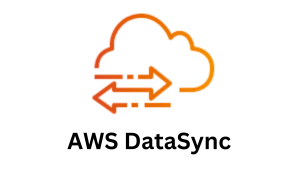


Key Benefits Delivered

Cost Savings
The migration to AWS provided cost savings for the client,
enabling them to optimize their infrastructure and only pay for the
resources they utilize.
Cost Savings
The migration to AWS provided cost savings for the client,
enabling them to optimize their infrastructure and only pay for the
resources they utilize.

Scalability and Performance
By leveraging AWS services such as EC2 and
RDS, we ensured scalability and improved performance for the Drlogy
website.
Scalability and Performance
By leveraging AWS services such as EC2 and
RDS, we ensured scalability and improved performance for the Drlogy
website.

Data Security and Integrity
The use of VPC, RDS, and S3 ensured
enhanced security and data integrity during the migration process.
Data Security and Integrity
The use of VPC, RDS, and S3 ensured
enhanced security and data integrity during the migration process.

Global Accessibility
Implementing CloudFront as a CDN enabled global
accessibility with low-latency access to resources from different
geographical locations.
Global Accessibility
Implementing CloudFront as a CDN enabled global
accessibility with low-latency access to resources from different
geographical locations.

Proactive Monitoring
Application monitoring using CloudWatch allowed
us to proactively identify and address any performance issues, ensuring a
seamless user experience.
Proactive Monitoring
Application monitoring using CloudWatch allowed
us to proactively identify and address any performance issues, ensuring a
seamless user experience.
Driving Growth through Strategic Innovation
Send download link to:
- client: Kers
- Location: Usa
- Surface Area: Skermset
- Architect: Istiak
- Year Of Complited: 2018
- Project Value: 50k
Strategic AWS Well-Architected Review

Strategic AWS Well-Architected Review

Introduction
Engaging in a Well-Architected Review (WAR) involves collaboration with authorized AWS partners who utilize AWS’s dedicated tool. The primary goal is to ensure that the infrastructure and systems built on AWS adhere to well-architected principles. In case of any issues, consulting partners like us provide recommendations based on the five pillars: security, operational excellence, performance efficiency, reliability, and cost optimization.
This method offers a comprehensive way to consistently evaluate your architecture against industry best practices, pinpointing areas for enhancement.
Now, let’s delve into a detailed example of a Well-Architected Review conducted for one of our clients.
About the Client
Our client is a one-touch healthcare solutions provider, empowering users to store health records, track fitness activities, access doctors and practices, and access health information through their Drlogy website.
Client Challenge
The client currently lacks a well-architected competency, and their architecture exhibits numerous loopholes in terms of Security, High Availability, Scalability, Reliability, Operational Excellence, and performance issues. Seeking to embrace AWS best practices, the client enlisted Signiance to conduct a comprehensive Well-Architected review of their IT environment.
Solutions
Signiance’s Well-Architected team conducted a thorough review of the customer’s AWS account, focusing on the key pillars of Security, Reliability, Operational Excellence, and Performance Efficiency. Our analysis revealed several high-risk and medium-risk indicators, prompting us to provide valuable insights and remediation strategies to enhance the overall architecture.
Security
The initial evaluation highlighted a gap in baseline security practices, such as misconfigured security groups and the absence of Multi-Factor Authentication for IAM users. Our recommended remediations not only addressed these issues but also positioned the client’s infrastructure as secure and well-architected, aligning with compliance standards.
Reliability
Identifying potential reliability issues in the existing infrastructure, we suggested solutions like implementing a load balancer, establishing backup schedules, and designing a robust disaster recovery setup. These measures aimed to enhance the reliability of the system, ensuring minimal impact on application and data availability.
Operational Excellence
Our assessment identified manual patching activities as a time-consuming and less secure practice. To streamline operations, we proposed automated patching solutions, efficient backup procedures, and other automation strategies. Embracing these recommendations promotes operational excellence, simplifying administration tasks and saving valuable time.
Performance Efficiency
Recognizing the absence of a comprehensive monitoring solution for key metrics like memory utilization, we recommended creating metrics, setting up alarms based on thresholds, and establishing actionable incident response procedures. These enhancements significantly boosted the overall performance of the infrastructure and application.
Additionally, we conducted an optimization check on instances, ensuring they were appropriately sized and utilizing the most suitable hardware. This holistic approach aimed to not only address immediate concerns but also lay the foundation for a resilient, efficient, and high-performing AWS environment.
Tech Stack




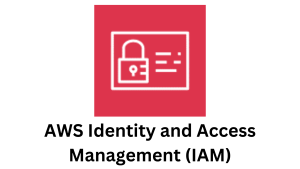




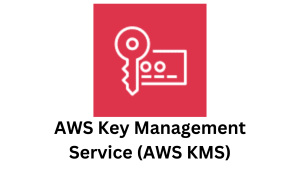
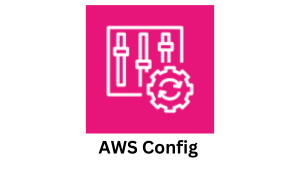


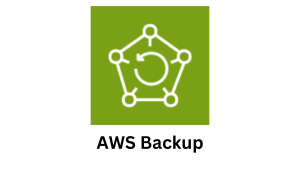
Conclusion
Following the Well-Architected review, we pinpointed issues in the client’s architecture and offered recommendations aligning with best practices. Implementing these suggestions has transformed the state of their architecture, ensuring it is now Well-Architected. This enhancement has seamlessly supported their business operations, earning high satisfaction from the client for Signiance’s dedicated efforts and excellence.
Driving Growth through Strategic Innovation
Send download link to:
- client: Kers
- Location: Usa
- Surface Area: Skermset
- Architect: Istiak
- Year Of Complited: 2018
- Project Value: 50k
Enhancing Data Management and Performance

Enhancing Data Management and Performance

About the Client
Our client is an innovation-focused company that specializes in creating high-impact digital experiences for global industry leaders and major brands in the Lifesciences, Healthcare, and Engineering domains.
Project Goals
The primary goal of the project is to efficiently manage and reduce the costs associated with storing terabytes of data on the Elastic File System (EFS). The current storage setup has proven to be costly, necessitating a more cost-effective approach.
Challenges
1. Utilization of Data on Elastic File System (EFS)
Multiple servers accessing
data on EFS posed challenges due to limitations with Elastic Block Store
(EBS).
2. Swift Data Accessibility
The application required fast data accessibility for
download, server-side processing, storage, and direct access, posing
challenges in data upload and retrieval speeds.
3. Opting for Amazon S3
Choosing Amazon S3 as an alternative to EFS
presented challenges considering data utilization, costs, and performance
requirements.
Solutions
To overcome the challenges and achieve the project goals, we implemented the
following solutions:
Direct Mounting of S3 Bucket
Rather than transferring data over the
internet, we mounted the S3 bucket directly as storage on the respective
servers. This approach offered several benefits.
Cost Reduction
Compared to EFS, S3 proved to be a more cost-effective
solution for storing terabytes of data.
Storage Class Optimization
S3 provided different storage classes tailored
to data usage patterns, allowing less frequently accessed data to be stored
in lower-cost storage classes.
Improved Performance
Mounting the S3 bucket on servers minimized the
access time, enhancing the speed and responsiveness of the application.
Tech Stack



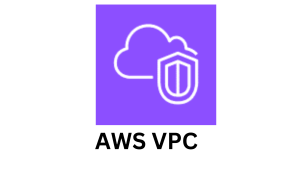
Key Benefits Delivered

Cost Savings
Utilizing Amazon S3 and optimizing storage classes resulted
in significant cost reductions compared to the previous EFS setup.
Cost Savings
Utilizing Amazon S3 and optimizing storage classes resulted
in significant cost reductions compared to the previous EFS setup.

Optimal Performance
Directly mounting the S3 bucket on servers
improved data access time, leading to faster application performance and
enhanced user experience.
Optimal Performance
Directly mounting the S3 bucket on servers
improved data access time, leading to faster application performance and
enhanced user experience.

Efficient Data Management
The project enabled efficient management
of terabytes of data by leveraging the cost-effectiveness and flexibility of
Amazon S3.
Efficient Data Management
The project enabled efficient management
of terabytes of data by leveraging the cost-effectiveness and flexibility of
Amazon S3.
As a cloud service provider, we successfully addressed the challenges faced by our client and provided a robust solution that reduced costs and improved performance for managing large volumes of data on the AWS platform.
Driving Growth through Strategic Innovation
Send download link to:
- client: Kers
- Location: Usa
- Surface Area: Skermset
- Architect: Istiak
- Year Of Complited: 2018
- Project Value: 50k
Streamlined Deployment on AWS ECS

Streamlined Deployment on AWS ECS

About the Client
The MAGIC5 is a pioneering company dedicated to crafting personalized swimming goggles that revolutionize the swimming experience. Unlike conventional goggles, their innovative approach involves creating custom-fit goggles tailored to the precise contours of each user’s face. By utilizing cutting-edge technology, they eliminate common issues such as leaks and uncomfortable pressure points, ensuring a perfect fit for enhanced comfort and performance.
At the core of their offering is a technology-driven method that utilizes advanced techniques to capture and analyze facial measurements with precision. This data is then used to produce goggles that not only fit seamlessly but also offer superior comfort and reliability in the water. With a focus on customization and attention to detail, MAGIC5 caters to swimmers of all levels, providing a bespoke solution that meets the unique needs and preferences of each individual.
Their product embodies the perfect synergy of comfort, performance, and precision, setting a new standard for swimming gear excellence. Whether you’re a professional athlete or a recreational swimmer, MAGIC5 goggles offer an unparalleled experience that enhances enjoyment and confidence in the water. With their commitment to innovation and customer satisfaction, MAGIC5 is poised to redefine the way swimmers perceive and interact with their gear, making waves in the industry and inspiring a new era of personalized swimming solutions.
Project Goals
The project embarked on the ambitious goal of establishing a comprehensive online presence on a global scale, with the primary objective of facilitating easy and convenient purchases of swimming goggles for customers worldwide. The client recognized the need to enhance their existing infrastructure to meet the growing demands of their customer base and opted to migrate their old environment to AWS ECS (Elastic Container Service) to achieve this goal.
The migration to AWS ECS was driven by several key factors, including the need for improved scalability, availability, and security. AWS ECS offers a highly scalable and flexible container orchestration service that enables the client to efficiently manage and deploy containerized applications. By leveraging ECS, the client can dynamically scale their application resources based on demand, ensuring optimal performance and responsiveness during peak traffic periods.
Furthermore, AWS ECS provides enhanced availability features, such as automatic load balancing and service auto-recovery, which help minimize downtime and ensure continuous availability of the application. This is critical for a global online platform where customers expect seamless access to products and services at all times.
In addition to scalability and availability, security was a top priority for the client. AWS ECS offers robust security features, including network isolation, encryption, and fine-grained access controls, which help safeguard sensitive customer data and protect against potential security threats. By migrating to ECS, the client can leverage these built-in security capabilities to enhance the overall security posture of their online platform and maintain compliance with industry regulations and standards.
The migration process involved several steps, including containerizing the application, defining ECS task definitions and services, setting up ECS clusters, and configuring load balancers and auto-scaling policies. The project team worked closely with the client to ensure a smooth transition and minimize disruption to ongoing operations.
Challenges
1. Deployment Pipeline
Setting up a deployment pipeline targeting specific
services within AWS ECS and incorporating a rollback strategy posed a
challenge. The client required an automated deployment process with the
ability to revert to previous versions if necessary
3. Testing and Validation
Ensuring thorough testing and validation before
promoting the application to the production environment was crucial. The
client needed to verify the stability and functionality of the application in
the test environment before releasing it to the live environment.
5. Seamless Rollbacks
In the event of issues or errors during deployment,
the client wanted the ability to roll back to a previous working version
quickly and seamlessly. This required implementing a rollback strategy that
could handle rollbacks across different environments without disruption to
the live application.
7. Monitoring and Notifications
The client required monitoring capabilities
to track the health and status of the deployment pipeline. They also
needed to receive notifications or alerts in case of any failures or issues
during the deployment process.
9. Cost Optimization
While deploying the application on AWS ECS, cost
optimization was an important consideration. The client sought a solution
that would optimize resource usage and minimize unnecessary costs
associated with the deployment process.
2. Environment-specific Deployments
The client needed to deploy the
application to different environments, including test and production
environments accessible both internally within the VPC and externally from
the internet. Each environment required specific configurations and access
controls.
4. Security and Access Control
The client required a secure deployment
process with appropriate access controls for different environments. They
needed to ensure that the production environment had strict security
measures in place, while still allowing necessary access for testing and
development purposes.
6. Integration with GitHub
Integrating the deployment pipeline with the
client’s existing GitHub repository posed a challenge. The solution needed
to ensure smooth integration and synchronization between the code
repository and the deployment process.
8. Scalability
As the client aimed to establish a global online presence, the
deployment solution needed to be scalable. It should accommodate
increasing demand and handle deployments to multiple regions or
availability zones seamlessly.
10. Complexity Management
Managing the complexity of the deployment
process, including the interaction between different services and
configurations, required careful planning and implementation. The solution
needed to simplify the deployment workflow while ensuring the necessary
flexibility and control.
Solutions
To address the challenges, our team proposed a solution leveraging AWS CodePipeline for automated deployment and rollback capabilities. We designed four CodePipelines tailored for different deployment scenarios:
Themagic5-test-external
Deploys the application on the test environment accessible from the
internet.
Enables thorough testing and validation before promoting to the
production environment.
Themagic5-prod-external
Deploys the application on the production environment accessible from
the internet.
Ensures controlled release with minimal disruption to the live
environment.
Themagic5-test-internal
Deploys the application on the test environment accessible within the
VPC (Virtual Private Cloud).
Provides a secure environment for testing and integration with internal
systems.
Themagic5-prod-internal
Deploys the application on the production environment accessible within
the VPC.
Enables a seamless release to the live environment while maintaining
desired security levels.
Tech Stack




Key Benefits Delivered

Cost Optimization
By leveraging AWS ECS, the client can optimize
resource usage, scale resources as needed, and minimize unnecessary
costs associated with the deployment process.
Cost Optimization
By leveraging AWS ECS, the client can optimize
resource usage, scale resources as needed, and minimize unnecessary
costs associated with the deployment process.

Enhanced Scalability and Availability
The migration to AWS ECS enables better
scalability, allowing the application to handle increasing user demand and
ensuring high availability across multiple regions or availability zones.
Enhanced Scalability and Availability
The migration to AWS ECS enables better
scalability, allowing the application to handle increasing user demand and
ensuring high availability across multiple regions or availability zones.

Monitoring and Notifications
The monitoring capabilities of AWS
CodePipeline and Amazon SNS enable real-time tracking of the
deployment pipeline’s health and status, ensuring prompt notifications of
any failures or issues.
Monitoring and Notifications
The monitoring capabilities of AWS
CodePipeline and Amazon SNS enable real-time tracking of the
deployment pipeline’s health and status, ensuring prompt notifications of
any failures or issues.

Simplified Workflow and Complexity Management
The streamlined
deployment workflow and integration with GitHub simplify the process,
reducing complexity and providing greater control and flexibility.
Simplified Workflow and Complexity Management
The streamlined
deployment workflow and integration with GitHub simplify the process,
reducing complexity and providing greater control and flexibility.

Streamlined Deployment
The automated deployment process with AWS
CodePipeline ensures efficient and controlled releases to different
environments, reducing deployment time and minimizing errors.
Streamlined Deployment
The automated deployment process with AWS
CodePipeline ensures efficient and controlled releases to different
environments, reducing deployment time and minimizing errors.
Driving Growth through Strategic Innovation
Send download link to:
- client: Kers
- Location: Usa
- Surface Area: Skermset
- Architect: Istiak
- Year Of Complited: 2018
- Project Value: 50k
Achieving High Availability and Cost Optimization

Achieving High Availability and Cost Optimization

About the Client
Our client’s mission is to help children in their community gain easy access to fresh fruit, addressing the issue of the limited availability of nutritious food for kids.
Project Goals
The project aimed to create a highly available and cost-effective platform for hosting a cPanel application, enabling efficient management of the website and resources.
Challenges
1. High-Speed cPanel Application
Ensuring a high-speed and responsive
cPanel application to provide a smooth user experience for website
management.
2. Cost Optimization
Implementing cost-effective solutions to minimize
infrastructure expenses while maintaining performance and availability
Solutions
To address the challenges and achieve the project goals, we implemented the following solutions:
Cost-Effective and Secure Platform
EC2 Instance: Utilizing an EC2 instance to host the cPanel application,
providing scalability and cost optimization based on the workload requirements.
VPC and Subnets: Creating a Virtual Private Cloud (VPC) and configuring
private subnets to ensure a secure environment for the application and
databases.
RDS: Deploying the database on Amazon RDS within the private subnet to
ensure secure data storage and optimized performance.
OpenVPN: Implementing OpenVPN in the public subnet to enable secure
remote access to the VPC resources.
Monitoring and Alerts
CloudWatch: Setting up monitoring and alerts using Amazon CloudWatch to
proactively monitor the health and performance of the application, ensuring
timely issue detection and resolution.
Continuous Integration and Deployment
Jenkins: Implementing CI/CD pipelines using Jenkins for automated build, test,
and deployment processes, ensuring efficient and streamlined application
updates.
Tech Stack












Key Benefits Delivered

Cost Optimization
By leveraging cost-effective AWS services, resource
allocation, and monitoring, we achieved cost optimization without
compromising performance and availability
Cost Optimization
By leveraging cost-effective AWS services, resource
allocation, and monitoring, we achieved cost optimization without
compromising performance and availability.

Enhanced Scalability and Availability
The use of EC2 instances, VPC, and RDS
provided scalability and high availability, ensuring the platform can handle
increased traffic and demand.
Enhanced Scalability and Availability
The use of EC2 instances, VPC, and RDS
provided scalability and high availability, ensuring the platform can handle
increased traffic and demand.

High-Speed cPanel Application
The optimized infrastructure setup and
monitoring ensured a high-speed and responsive cPanel application,
enhancing the user experience and website management efficiency
High-Speed cPanel Application
The optimized infrastructure setup and
monitoring ensured a high-speed and responsive cPanel application,
enhancing the user experience and website management efficiency.

Secure Environment
The implementation of VPC, subnets, and OpenVPN
enhanced the security of the platform, protecting sensitive data and
resources.
Secure Environment
The implementation of VPC, subnets, and OpenVPN
enhanced the security of the platform, protecting sensitive data and
resources.

Streamlined Deployment
The integration of Jenkins and CI/CD
pipelines allowed for automated and efficient deployment, reducing
manual effort and enabling rapid updates.
Streamlined Deployment
The integration of Jenkins and CI/CD
pipelines allowed for automated and efficient deployment, reducing
manual effort and enabling rapid updates.
Driving Growth through Strategic Innovation
Send download link to:
- client: Kers
- Location: Usa
- Surface Area: Skermset
- Architect: Istiak
- Year Of Complited: 2018
- Project Value: 50k
Elastic Beanstalk to ECS

Elastic Beanstalk to ECS

About the Client
True Impact is a social impact measurement platform that helps purpose-driven enterprises demonstrate the concrete results of their donations and volunteerism.
Project Goals
This case study highlights the successful migration of True Impact’s backend application from Elastic Beanstalk to Amazon ECS (Elastic Container Service) using Docker containers. Leveraging various AWS services such as ECR, ECS, ALB, RDS, and Secrets Manager, the organization achieved enhanced scalability, cost-effectiveness, and improved security. This case study provides insights into the migration process, services utilized, and the resulting benefits.
Challenges
1. Container Orchestration
Running and managing multiple Docker
containers in ECS and ensuring efficient communication between services.
2. Data Migration
Migrating staging and production databases to RDS
instances without impacting data integrity and availability.
3. Security and Secrets Management
Safely storing and managing sensitive
environment variables and credentials.
4. Infrastructure Setup
Configuring ECS clusters, ALB, VPC peering, and DNS
configurations to ensure a seamless transition.
5. Application Monitoring
Setting up effective monitoring and logging
mechanisms for the Dockerized application running on ECS.
Solutions
To overcome the challenges and achieve the project goals, we implemented the
following solutions:
Containerization
Dockerizing the backend application to create portable
and scalable container images.
AWS Service Utilization
Leveraging ECR for secure container image
storage, ECS for container orchestration, ALB for load balancing, RDS for
database management, and Secrets Manager for secure storage of
environment variables and credentials.
Data Migration Strategy
Planning and executing a phased approach to
migrate staging and production databases to RDS instances, ensuring data
consistency and availability.
Infrastructure Setup and Networking
Setting up ECS clusters,
configuring ALB for load balancing, establishing VPC peering, and
managing DNS configurations with Route53.
Monitoring and Logging
Utilizing AWS CloudWatch Logs for centralized
logging and monitoring of the Dockerized application, ensuring visibility
into performance and issues.
Tech Stack















Key Benefits Delivered

Cost Optimization
By leveraging ECS and other AWS-managed services,
True Impact achieved cost optimization through efficient resource
utilization and pay-as-you-go pricing models.
Cost Optimization
By leveraging ECS and other AWS-managed services,
True Impact achieved cost optimization through efficient resource
utilization and pay-as-you-go pricing models.

Enhanced Scalability and High Availability
Migrating to ECS allowed True Impact’s
backend application to scale effortlessly, ensuring high availability and
improved performance during peak loads.
Enhanced Scalability and High Availability
Migrating to ECS allowed True Impact’s
backend application to scale effortlessly, ensuring high availability and
improved performance during peak loads.

Efficient Resource Utilization
Centralized logging and monitoring with
CloudWatch Logs enabled proactive issue detection and troubleshooting,
leading to improved operational efficiency and reduced downtime.
Efficient Resource Utilization
Centralized logging and monitoring with
CloudWatch Logs enabled proactive issue detection and troubleshooting,
leading to improved operational efficiency and reduced downtime.

Enhanced Security
Implementing private subnets, Secrets Manager, and
VPN access improved the security posture of the application, protecting
sensitive data and preventing unauthorized access.
Enhanced Security
Implementing private subnets, Secrets Manager, and
VPN access improved the security posture of the application, protecting
sensitive data and preventing unauthorized access.

Streamlined Deployment
With the migration to ECS and Docker containers, True
Impact gained the flexibility to adopt a microservices architecture,
enabling future scalability and faster application development.
Streamlined Deployment
With the migration to ECS and Docker containers, True
Impact gained the flexibility to adopt a microservices architecture,
enabling future scalability and faster application development.
Driving Growth through Strategic Innovation
Send download link to:
- client: Kers
- Location: Usa
- Surface Area: Skermset
- Architect: Istiak
- Year Of Complited: 2018
- Project Value: 50k


